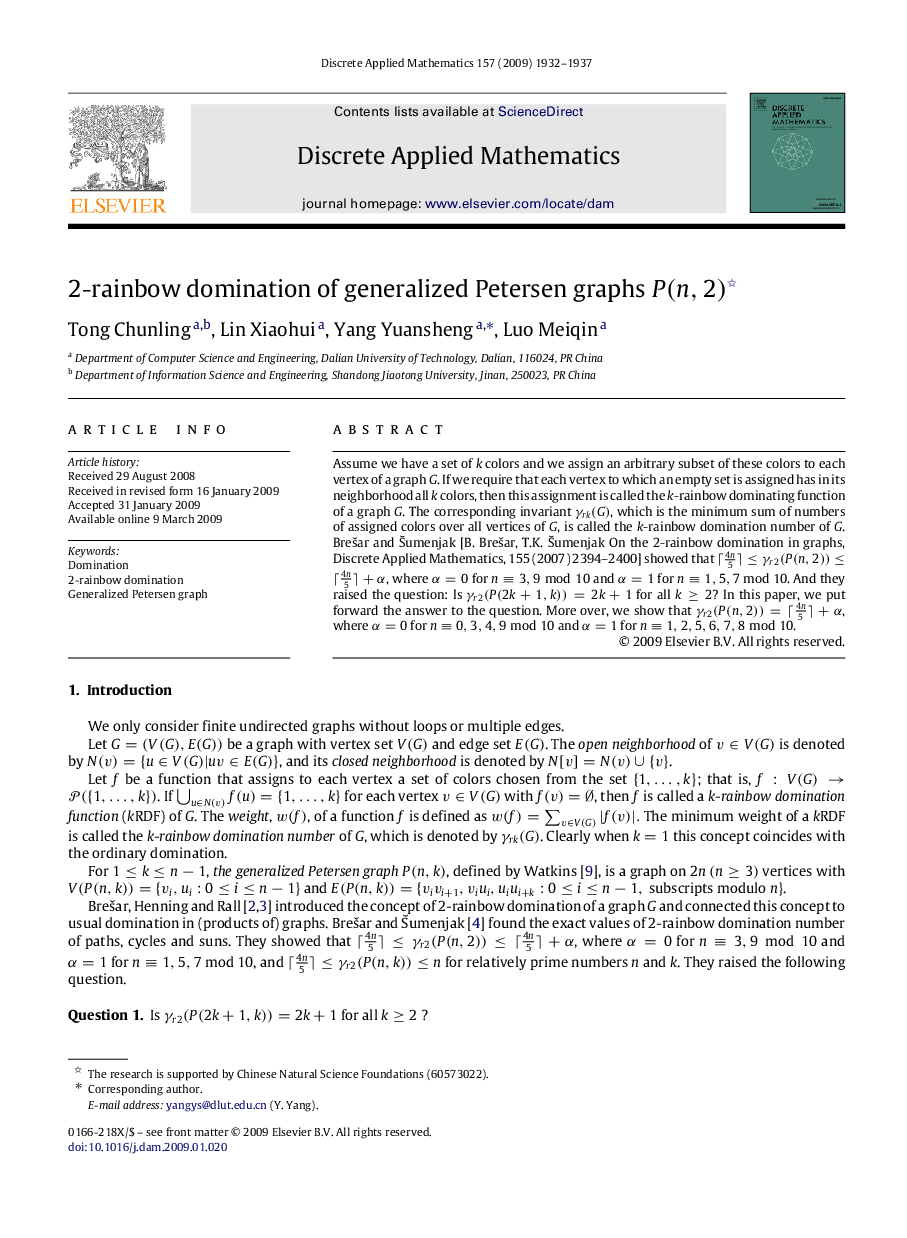| Article ID | Journal | Published Year | Pages | File Type |
|---|---|---|---|---|
| 420575 | Discrete Applied Mathematics | 2009 | 6 Pages |
Assume we have a set of kk colors and we assign an arbitrary subset of these colors to each vertex of a graph GG. If we require that each vertex to which an empty set is assigned has in its neighborhood all kk colors, then this assignment is called the kk-rainbow dominating function of a graph GG. The corresponding invariant γrk(G)γrk(G), which is the minimum sum of numbers of assigned colors over all vertices of GG, is called the kk-rainbow domination number of GG. Brešar and S˘umenjak [B. Brešar, T.K. S˘umenjak On the 2-rainbow domination in graphs, Discrete Applied Mathematics, 155 (2007) 2394–2400] showed that ⌈4n5⌉≤γr2(P(n,2))≤⌈4n5⌉+α, where α=0α=0 for n≡3,9mod10n≡3,9mod10 and α=1α=1 for n≡1,5,7 mod 10n≡1,5,7 mod 10. And they raised the question: Is γr2(P(2k+1,k))=2k+1γr2(P(2k+1,k))=2k+1 for all k≥2k≥2? In this paper, we put forward the answer to the question. More over, we show that γr2(P(n,2))=⌈4n5⌉+α, where α=0α=0 for n≡0,3,4,9mod10n≡0,3,4,9mod10 and α=1α=1 for n≡1,2,5,6,7,8mod10n≡1,2,5,6,7,8mod10.
